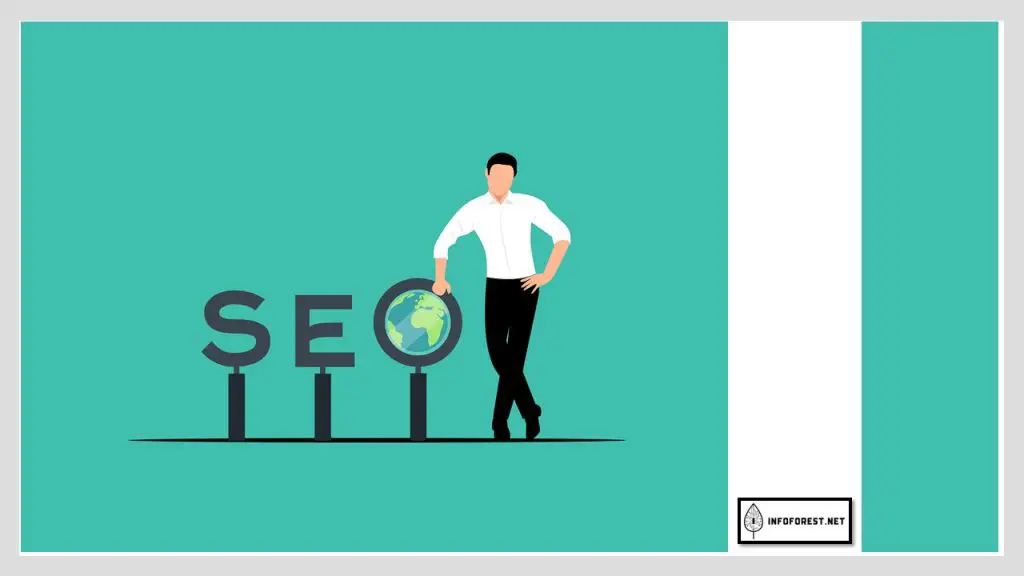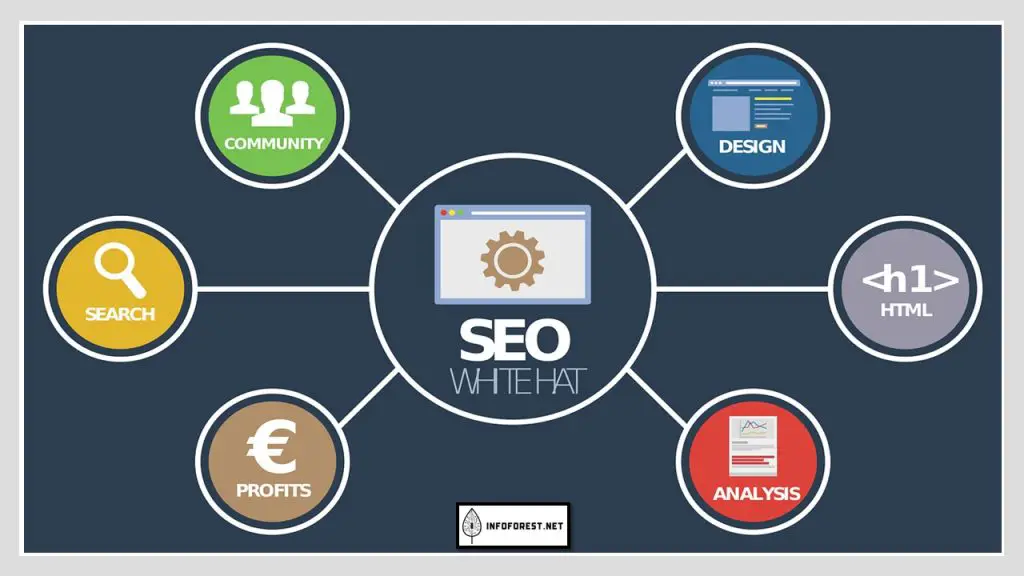
Search Engine Optimization (SEO) is the process of improving a website’s visibility and ranking on search engines like Google, Bing, and Yahoo. The purpose of SEO is to drive more organic traffic to a website from search engine results pages (SERPs). This is achieved by optimizing various elements of a website, such as its content, code, and structure, to make it more attractive to search engines and users. Effective SEO requires a deep understanding of how search engines work and what types of content and tactics will help a website rank higher in SERPs. It is an ongoing process that requires continuous monitoring, testing, and improvement to maintain and improve a website’s search engine rankings.
History
Here is a brief history of the development of Search Engine Optimization (SEO):
- The first search engines: The first search engines, such as Archie and Veronica, were created in the 1990s to index and categorize the growing number of websites on the Internet.
- The launch of Google: Google was launched in 1998, revolutionizing the search engine industry with its innovative algorithms and indexing techniques.
- Link popularity: The importance of link popularity as a ranking factor was first introduced by Google, leading to a focus on link building and other off-page optimization techniques.
- The rise of SEO: The rapid growth of the Internet and the increasing importance of search engines as a source of online traffic led to the rise of SEO as a professional discipline.
- The introduction of Google’s updates: Google’s algorithm updates, such as the Penguin and Panda updates, have continually evolved over the years, aimed at improving the quality of search results and penalizing websites engaging in spammy or low-quality practices.
- The importance of mobile optimization: The rise of mobile devices and the integration of maps and location data into search results have led to the importance of mobile optimization and local search optimization.
- The rise of voice search: With the growing popularity of virtual assistants such as Siri and Alexa, the importance of optimizing for voice search and ensuring a positive voice search experience for users has become increasingly important.
- The importance of content quality: The shift towards a focus on user experience and the importance of high-quality, relevant content in search engine ranking has become increasingly important in recent years.
The field of SEO is constantly evolving, and staying up to date with the latest best practices and algorithm changes is an ongoing process for those working in the field.

Why is SEO important?
SEO is important for several reasons:
- Increased visibility: Higher search engine rankings lead to increased visibility for a website, resulting in more organic traffic and potential customers.
- Cost-effective: SEO is a cost-effective marketing strategy compared to traditional advertising methods.
- Improved user experience: A well-optimized website provides a better user experience, which can lead to higher engagement and increased trust in a brand.
- Increased brand credibility: High search engine rankings can improve a brand’s credibility and perceived authority in its industry.
- Long-term results: The benefits of SEO are long-term and sustainable, unlike paid advertising, which can stop as soon as the budget runs out.
Overall, SEO is a critical component of a comprehensive digital marketing strategy. It helps businesses reach their target audience and achieve their goals by improving their online presence and visibility.
How does SEO work?
SEO works by improving the relevance and authority of a website to search engines. Relevance refers to the extent to which a website’s content matches a user’s search query, while authority refers to the overall quality and credibility of a website’s content and structure. Search engines use complex algorithms to determine the relevance and authority of a website, and then rank it in search engine results pages (SERPs).
To improve a website’s ranking, SEO practitioners focus on optimizing several elements, including:
- Keywords: Researching and incorporating relevant keywords in a website’s content and meta tags to match user search queries.
- On-page optimization: Improving the content, structure, and overall user experience of a website to make it more attractive to search engines and users.
- Technical optimization: Improving the technical aspects of a website, such as its code, load speed, and mobile responsiveness.
- Link building: Acquiring high-quality backlinks from other reputable websites to increase the authority of a website.
- Content creation: Developing and publishing high-quality, relevant content to engage users and attract backlinks.
SEO is an ongoing process that requires continuous monitoring, testing, and improvement. As search engines update their algorithms, SEO practices must also evolve to stay effective.

Organic search
Organic search refers to the non-paid or “natural” results that appear in search engine results pages (SERPs) when a user conducts a search. These results are generated based on the relevance and authority of a website, as determined by a search engine’s algorithm.
Organic search results are in contrast to paid search results, which appear as sponsored ads and are typically marked as such. Paid search results are generated through pay-per-click (PPC) advertising campaigns, where businesses bid on keywords related to their products or services and pay each time a user clicks on their ad.
Organic search is an important source of traffic for many websites, as it is considered more credible and trustworthy by users compared to paid search results. Improving a website’s organic search ranking is the goal of search engine optimization (SEO) efforts.
Paid search
Paid search refers to the advertising model where businesses pay to have their ads displayed in search engine results pages (SERPs) when a user conducts a search for keywords related to their products or services. This form of advertising is also known as pay-per-click (PPC) advertising, as the advertiser pays each time a user clicks on their ad.
Paid search ads appear as sponsored results at the top or bottom of the SERP, usually distinguished from organic search results by being marked as ads. The placement and visibility of paid search ads are determined by a bidding system, where businesses compete for a limited number of ad slots by bidding on keywords related to their products or services. The business that bids the highest amount for a keyword will have its ad displayed in the coveted top position on the SERP.
Paid search can be a highly effective form of advertising for businesses, as it provides a way to reach a large audience quickly and target specific keywords and demographics. However, it also requires a significant investment and ongoing management to ensure the best return on investment.
We also invite you not to miss our other popular articles such as:
Difference Between Rose Gold and Yellow Gold– ChatGPT–Difference between left and right Twix–Difference Between Eastern Time Zone and Central Time Zone–Difference Between Capitalism and Communism– Difference Between EST and EDT–How many weeks in a Year– Difference Between Evening and Afternoon – Democrat vs Republican

10 principles of SEO
Here are ten principles to follow in order to effectively optimize your website for search engines:
- Relevance: Ensure that your website’s content is relevant to the keywords you are targeting and the interests of your target audience.
- Keyword research: Conduct thorough keyword research to identify the most relevant keywords to target and ensure that they are incorporated into your website’s content and meta tags.
- On-page optimization: Optimize your website’s content, structure, and overall user experience to improve its relevance and authority to search engines.
- Technical optimization: Ensure that your website’s technical aspects, such as its code, load speed, and mobile responsiveness, are optimized for search engines and users.
- Link building: Acquire high-quality backlinks from other reputable websites to increase the authority of your website.
- Content creation: Develop and publish high-quality, relevant content to engage users and attract backlinks.
- User experience: Ensure that your website provides a positive user experience, with fast load speeds, easy navigation, and useful, engaging content.
- Local optimization: If you are targeting a local audience, optimize your website for local search by including your business’s location and contact information.
- Mobile optimization: Optimize your website for mobile devices, as an increasing number of users access the web on their smartphones.
- Continuous improvement: SEO is an ongoing process that requires continuous monitoring, testing, and improvement. Stay up to date with changes in search engine algorithms and adapt your optimization efforts accordingly.
SEO vs PPC
SEO (Search Engine Optimization) and PPC (Pay-Per-Click) are two different digital marketing strategies for increasing a website’s visibility and attracting traffic from search engines.
SEO involves optimizing a website to rank higher in organic search results by improving its relevance and authority in the eyes of search engines. This is achieved through tactics such as keyword research, on-page optimization, technical optimization, link building, and content creation.
PPC, on the other hand, involves paying for visibility in search results by placing sponsored ads in the form of pay-per-click (PPC) advertising. In PPC, businesses bid on keywords related to their products or services and pay each time a user clicks on their ad.
Both SEO and PPC have their own advantages and disadvantages. SEO provides long-term, sustainable results but takes time to implement and can be more difficult to measure. PPC provides quick, measurable results but requires ongoing investment and management. Many businesses choose to use a combination of both SEO and PPC for a comprehensive digital marketing strategy.
Most Viewed Articles
Conclusion
In conclusion, Search Engine Optimization (SEO) is a critical aspect of digital marketing that helps websites improve their visibility and ranking in search engine results pages (SERPs). By optimizing various elements of a website, including its content, technical aspects, and backlinks, websites can attract more targeted traffic and increase their credibility and authority in the eyes of search engines. SEO requires ongoing effort and adaptation to changes in search engine algorithms and best practices, but the rewards can be significant in terms of increased website traffic, visibility, and business growth. A well-executed SEO strategy can help businesses establish a strong online presence and reach their target audience more effectively.
We also invite you not to miss our other popular articles such as:
What is RSV– What Is Web 3.0–What is NFT–What is a Recession– What Is Bitcoin– What Is PayPal and How Does it Work – Kilometer vs Mile – How to get rid of hiccups What does TBH mean – What does NSFW mean – What does IG mean–What does CAP mean– What is normal blood pressure –What is the rarest blood type–Difference Between Hotel And Motel – Differences Between Chinese and Japanese and Difference Between Zip Code and Postal Code






